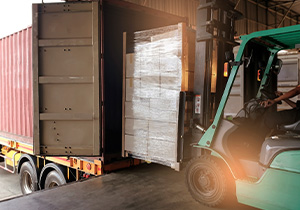When it comes to supply chains, speed and productivity are two critical aspects of growth and development. Cross-docking is one of the strategies that businesses use to gain a competitive edge. When done correctly with the help of a 3PL warehouse, cross-docking can increase efficiency and reduce handling times.
What is Cross-Docking?
Cross-docking refers to a specific logistics technique in which items are transferred directly from a supplier or production plant to an outgoing carrier, such as a commercial client. Cross-docking is done in a distribution docking terminal, which has dock doors on both sides (inbound and outbound). It’s a way of keeping supply chains flowing in a productive and efficient manner. Facilities that support cross-docking offer more than a traditional distribution center, with commodities passing through very quickly.
In comparison to a standard distribution center, cross-docking warehouses offer support to companies that don’t necessarily need a lot of storage space, or that have products (such as perishables) where long-term storage is not beneficial. Inbound and outbound channels make up the docking terminal. As a result, inbound cargo is delivered directly to a receiving dock. The items are then transported to their final destination by forklifts, conveyor belts, pallet trucks, or other means, where they are processed and consolidated before being shipped off. In many cases with cross-docking, the items are only in the docking facility for less than 24 hours.
Uses for Cross-Docking
A company can often accelerate inventory turns while lowering material handling and distribution expenses by switching from traditional distribution centers to cross-docking facilities such as a 3PL warehouse. Cross-docking may also save money by removing some of the need for warehouse space and manpower. This method also saves money by requiring less packaging and storage space. In particular, the strategy of cross-docking has substantial advantages in certain types of industries like:
- Foodstuffs, drinks, and perishable commodities
- Components and raw materials from inbound suppliers
- Products and shipments that have already been packed and sorted
Benefits of Cross-Docking
Cross-docking has a number of advantages that are attractive to certain types of industries and business needs. One big benefit is the quantity of storage space that has been freed up. Despite the fact that the items must have their own place in the facility, cross-docking frees up core storage space. If a business doesn’t need or want storage, cross-docking is an option. A second benefit is shortened delivery times, which can increase supply chain flexibility. A third benefit is less handling, which inherently decreases the chances for damage to the product, missing pieces, and more. Overall, cross-docking is considered a kind of shortcut that can save money, time, and possibly lead to higher profits and better customer satisfaction.
The key to successful cross-docking lies in choosing the right 3PL warehouse partner. At American Warehouse, Inc. we are adept at handling all your cross-docking needs. Whether you are transitioning into or out of the cross-docking strategy, we can help. Contact us today to learn more.
Contact American Warehouse
The key to successful cross-docking lies in choosing the right 3PL warehouse partner. At American Warehouse, Inc. we are adept at handling all your cross-docking needs. Whether you are transitioning into or out of the cross-docking strategy, we can help. Contact American Warehouse, Inc. today.

